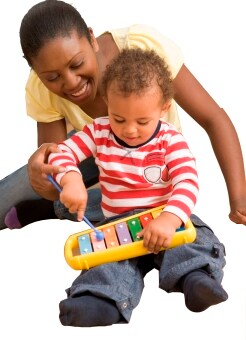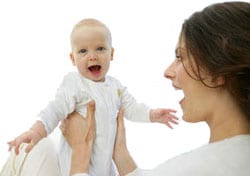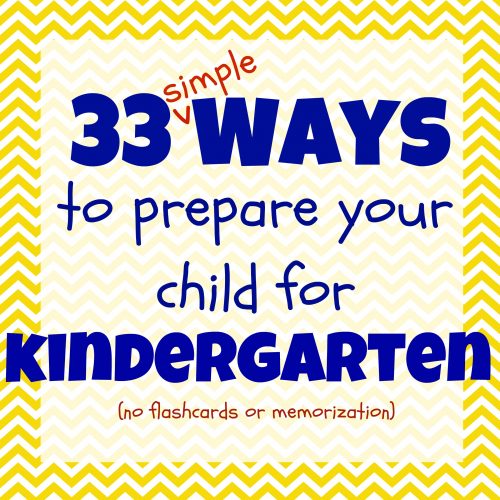All smiles the first day of school...that's what we like to see!
The following pictures of C-FB ISD kids on the first day of school were submitted by parents. We have had 84 pictures submitted so far but it's not too late to add more. Share your pride and joy with us by submitting your pictures by clicking here.
Tuesday, August 28, 2012
Proud Parent Pics -- First Day of School 2012
Get Involved in C-FB through the PTA
The greatest supporter of C-FB ISD is the PTA. Through PTA Support, C-FB is able to accomplish its goal of high achievement for all students. Check out the C-FB Council PTA website.
Get the inside scoop on C-FB ISD
C-FB Blogabilities: Get the inside scoop on C-FB ISD: Do you love your campus? Do you love C-FB ISD? Tell others and be a C-FB Ambassador! Community Ambassador Academy September 11, October...
Monday, August 27, 2012
Little Hands at Play...and Learning!
 Developing gross motor skills is
an essential part of development. Children start developing their gross
motor skills from birth through obtaining control over their head,
trunk and limbs and rapidly increase their abilities throughout the
preschool years. Gross motor skills are essential because a child’s
body develops from large movements with arms and legs to smaller more
refined movements of the hands and fingers. Gross motor control enables
children to develop the fine motor movements that are essential for
success in the school years.
Developing gross motor skills is
an essential part of development. Children start developing their gross
motor skills from birth through obtaining control over their head,
trunk and limbs and rapidly increase their abilities throughout the
preschool years. Gross motor skills are essential because a child’s
body develops from large movements with arms and legs to smaller more
refined movements of the hands and fingers. Gross motor control enables
children to develop the fine motor movements that are essential for
success in the school years.
Here are 30 creative ideas to help your child improve and master the art of fine motor skills.
Special Offer to Prek Parents

Exciting News!
You no longer have to wait for you kids to start school to order books from Scholastic. We now offer our Future C-FB students the opportunity to order online from the Scholastic Book Club. You can create a profile listing each child by gender and age and a list of recommended books will be provided for you.
Click here to visit the Scholastic website. You will need to register and provide the access code:
L49BQ
Cooking up some fun!

Craft recipes are fun to make and are ideal for preschoolers.
MOON SAND:
Mix 9 cups extra fine, colored play sand. Add 3 cups cornstarch and 2-1/4 to 2-1/2 cups water. Start with 2-1/4 cup and gradually continue adding water until you have the desired consistency. Mix well. Cover and store in an airtight container.Click here to see more craft recipes.
Tuesday, August 21, 2012
Toddlers and Technology
 Can mobile apps really help preschoolers learn? Couldn't hurt to try, right? As
long as you don't overdo it, iPhone apps for preschoolers can open up a world of
possibilities and fun. (Not to mention, keep them occupied in waiting rooms,
traffic jams, or long lines!) Our app reviews for preschoolers will guide you
toward the best apps out there, so you don't waste time on the stinkers. Here
are some great educational preschool apps that teach ABCs, 123s, colors, shapes,
and much more.
Can mobile apps really help preschoolers learn? Couldn't hurt to try, right? As
long as you don't overdo it, iPhone apps for preschoolers can open up a world of
possibilities and fun. (Not to mention, keep them occupied in waiting rooms,
traffic jams, or long lines!) Our app reviews for preschoolers will guide you
toward the best apps out there, so you don't waste time on the stinkers. Here
are some great educational preschool apps that teach ABCs, 123s, colors, shapes,
and much more.Milestones: Your Child at One Year

What most children do at this age:
Social and Emotional
- Is shy or nervous with strangers
- Cries when mom or dad leaves
- Has favorite things and people
- Shows fear in some situations
- Hands you a book when he wants to hear a story
- Repeats sounds or actions to get attention
- Puts out arm or leg to help with dressing
- Plays games such as “peek-a-boo” and “pat-a-cake”
Language/Communication
- Responds to simple spoken requests
- Uses simple gestures, like shaking head “no” or waving “bye-bye”
- Makes sounds with changes in tone (sounds more like speech)
- Says “mama” and “dada” and exclamations like “uh-oh!”
- Tries to say words you say
Cognitive (learning, thinking, problem-solving)
- Explores things in different ways, like shaking, banging, throwing
- Finds hidden things easily
- Looks at the right picture or thing when it’s named
- Copies gestures
- Starts to use things correctly; for example, drinks from a cup, brushes hair
- Bangs two things together
- Puts things in a container, takes things out of a container
- Lets things go without help
- Pokes with index (pointer) finger
- Follows simple directions like “pick up the toy”
Movement/Physical Development
- Gets to a sitting position without help
- Pulls up to stand, walks holding on to furniture (“cruising”)
- May take a few steps without holding on
- May stand alone
Monday, August 20, 2012
50 Ways for Preschoolers to Learn Their ABC’s

Source: handsonaswegrow.com
Click here to see 50 fun and playful ways to teach your your child the alphabet.
C-FB Blogabilities: Golfing for Healthy Smiles
Annual Family Health Center Charity Golf Event Sunday, Oct 14, 2012 Established by PGA TOUR Professionals Scott Verplank and And...
Oak Crest Private School’s Beginner
program launches young student’s right
into a decidedly academic program. Due to small class sizes and the
individualized nature of our programs, students are advanced as soon as they
learn the materials presented. In a fun, lively, action-packed class, students
are guided into mastering the alphabet, phonics and then begin reading. Most
children are able to read before age 5! Contact us for more information.
http://www.oakcrestschool.org
// 214-483-5400 // hildegardj@oakcrestschool.org
Tuesday, August 14, 2012
Milestones: Your Baby at Nine Months
 How your child plays, learns, speaks, and acts offers important clues about your child’s development. Developmental milestones are things most children can do by a certain age.
How your child plays, learns, speaks, and acts offers important clues about your child’s development. Developmental milestones are things most children can do by a certain age.
Check the milestones your child has reached by the end of 9 months.
What most babies do at this age:
Social and Emotional
- May be afraid of strangers
- May be clingy with familiar adults
- Has favorite toys
Language/Communication
- Understands “no”
- Makes a lot of different sounds like “mamamama” and “bababababa”
- Copies sounds and gestures of others
- Uses fingers to point at things
Cognitive (learning, thinking, problem-solving)
- Watches the path of something as it falls
- Looks for things he sees you hide
- Plays peek-a-boo
- Puts things in her mouth
- Moves things smoothly from one hand to the other
- Picks up things like cereal o’s between thumb and index finger
Movement/Physical Development
- Stands, holding on
- Can get into sitting position
- Sits without support
- Pulls to stand
- Crawls
Supercharged Brain
Top Five Brain Foods
(source: 4life4mind.com)
1. Fish
2. Avocados
3. Blueberries
4. Spinach
5. Eggs
Click here to find out what makes these foods good for brain development.
(source: 4life4mind.com)
1. Fish
2. Avocados
3. Blueberries
4. Spinach
5. Eggs
Click here to find out what makes these foods good for brain development.
Monday, August 13, 2012
One...Two...I Can Tie My Shoes!

Is your child at that stage where they are learning to lace but still haven’t mastered tying? Lacing and tying are excellent activities for children to develop fine motor skills and hand-eye coordination. This early learning shoe activity will help encourage them in these new skills and they will have so much fun in the process.
Click here for instructions on how to make this teaching tool.
View this and other creative ideas on our Pinterest Parenting Young Children board.
Welcome to School Printable
Get your child excited about starting school by reading this printable book together.
Visit our NEW printables page on our website or follow our Pinterest board.
Visit our NEW printables page on our website or follow our Pinterest board.
Kinder Preppers
Preparing your child for kindergarten doesn't have to be stressful. It's as easy as 15-20 minutes of purposeful play time. Click here to see a list of simple ideas to ensure your child is ready for kindergarten.
Monday, August 6, 2012
Color Me C-FB
We have a new "printables" section on our website. New printables will be added weekly so check back often. Click here to download this Color Me C-FB coloring page.
Milestones: Your Baby at Six Months
 How your child plays, learns, speaks, and acts offers important
clues about your child’s development. Developmental milestones are
things most children can do by a certain age.
How your child plays, learns, speaks, and acts offers important
clues about your child’s development. Developmental milestones are
things most children can do by a certain age.Check the milestones your child has reached by the end of 6 months. Take this with you and talk with your child’s doctor at every visit about the milestones your child has reached and what to expect next.
What most babies do at this age:
Social and Emotional
- Knows familiar faces and begins to know if someone is a stranger
- Likes to play with others, especially parents
- Responds to other people’s emotions and often seems happy
- Likes to look at self in a mirror
Language/Communication
- Responds to sounds by making sounds
- Strings vowels together when babbling (“ah,” “eh,” “oh”) and likes taking turns with parent while making sounds
- Responds to own name
- Makes sounds to show joy and displeasure
- Begins to say consonant sounds (jabbering with “m,” “b”)
Cognitive (learning, thinking, problem-solving)
- Looks around at things nearby
- Brings things to mouth
- Shows curiosity about things and tries to get things that are out of reach
- Begins to pass things from one hand to the other
Movement/Physical Development
- Rolls over in both directions (front to back, back to front)
- Begins to sit without support
- When standing, supports weight on legs and might bounce
- Rocks back and forth, sometimes crawling backward before moving forward
Are Fat Babies Smarter?
 Source: www.brainy-child.com
Source: www.brainy-child.comBaby brain development is affected greatly by a baby's nutrition intake. Children who are malnourished will resulted an inadequate brain growth that showing lower IQ, slower language and fine motor development. Before we talk about the kind of food that we need to 'feed' the brain. We probably want to ask ourselves, what is our brain made of?
Our brain is primarily fat, 60% by dry weight! Few people realize how important fat is to a healthy brain. And DHA, the most plentiful fatty acid in the brain, is crucial to brain health, from infancy to old age.
Click here to find out more about DHA and nutrition for the brain.
Subscribe to:
Posts (Atom)






